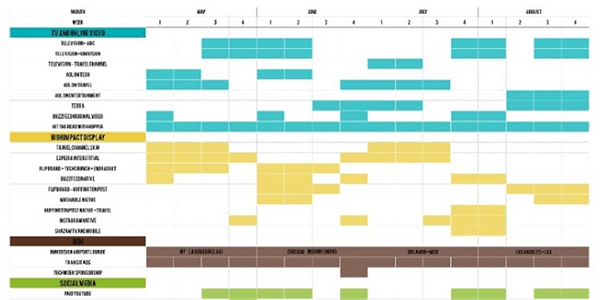Early last week major media outlets like the Washington Post and the New York Times reported that the Michael Bloomberg campaign was upping their efforts to attract eyeballs by doubling their current media buys from 1200 to 2400 Gross Rating Points (GRPs). For the uninitiated, this begs the question: what exactly does 2400 GRP buy?
Wikipedia explains that in broadcast advertising (as opposed to print advertising), a gross rating point (GRP) is a measure of the size of an advertising campaign by a specific medium (station) or (programming) schedule. It does not measure the size of the audience reached, but rather quantifies impressions as a percentage of the target population.
A GRP should be read as a percentage, but for you stat geeks, this percentage can be less or far greater than 100 percent of the audience, which I’m sure you find annoying. For more on how that works, read on.
GRPs are a reach and frequency calculation. Buying 100 gross rating points should allow you to reach 100% of your target audience one time. So, Bloomberg’s campaign purchase of 2400 GRPs essentially means they are trying to reach 100% of their target audience with a frequency of 24 times during the designated period.
Now here comes the fun part: 2400 GRPs in one target market can be markedly different than another target market. With a 2019 estimated population of 1.36 million residents, 100 GRPs in New Hampshire would be much cheaper than buying 100 GRPs in Iowa where they boast 3.155 million residents. But the following week you’ll be adding in the 3.08 million residents of Nevada and then the 5.15 million residents of South Carolina all before targeting the 126.558 million March 3, Super Tuesday voters.
While we do know that Bloomberg has reportedly spent more than $300 million on broadcast and digital ads, according to ad tracking firm Advertising Analytics, since entering the race in November, calculating the actual estimated cost of reaching all of these voters going forward is for another blog post. It will take you wandering into such issues as you can’t actually buy 100% of the audience because you have to piece together a bunch of different programming segments and even in a best case scenario you may only be able to reach 95% of viewers, but hopefully you’re a little more educated now about GRPs and understand why you thought you were seeing Michael Bloomberg ads each time you tuned in last week – because you were, at least 24 times!
This post courtesy of MMC Principal Jennifer Koon.



